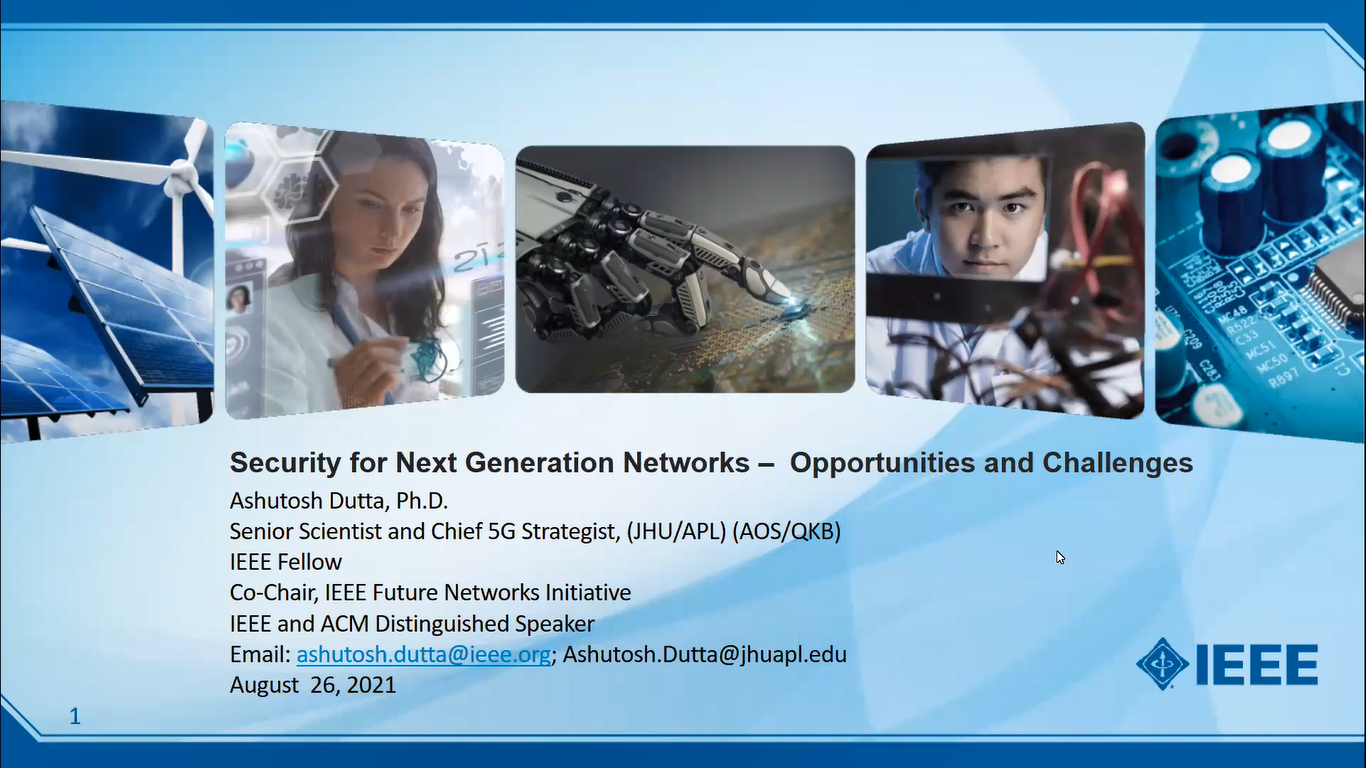
This video program is a part of the Premium package:
Security for Next Generation Networks: Opportunities and Challenges
- IEEE MemberUS $4.99
- Society MemberUS $0.00
- IEEE Student MemberUS $4.99
- Non-IEEE MemberUS $9.99
Security for Next Generation Networks: Opportunities and Challenges
Software Defined Networking (SDN) and Network Function Virtualization (NFV) are the key pillars of future networks, including 5G and beyond that promise to support emerging applications such as enhanced mobile broadband, ultra-low latency, massive sensing type applications while providing the resiliency in the network. Service providers and other vertical industries (e.g., Connected Cars, IOT, eHealth) can leverage SDN/NFV to provide flexible and cost-effective service without compromising the end user quality of service (QoS). While NFV and SDN open up the door for flexible networks and rapid service creation, these also offer both security opportunities while also introducing additional challenges and complexities, in some cases. With the rapid proliferation of 4G and 5G networks, operators have now started the trial deployment of network function virtualization, especially with the introduction of various virtualized network elements in the access and core networks. This talk addresses evolution of cellular technologies towards 5G but largely focuses on various security challenges and opportunities introduced by SDN/NFV and 5G networks and enablers such as Hypervisor, Virtual Network Functions (VNFs), SDN controller, orchestrator, network slicing, cloud RAN, edge cloud, and security function virtualization. This talk introduces a threat taxonomy for 5G security from an end-to-end system perspective, potential threats introduced by these enablers, and associated mitigation techniques. At the same time, some of the opportunities introduced by these pillars are also discussed. This talk also highlights some of the ongoing activities within various standards communities including open source consortiums, large scale testbeds, and illustrates a few deployment use case scenarios for security.
 Cart
Cart Create Account
Create Account Sign In
Sign In





